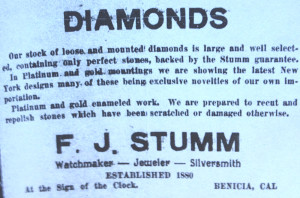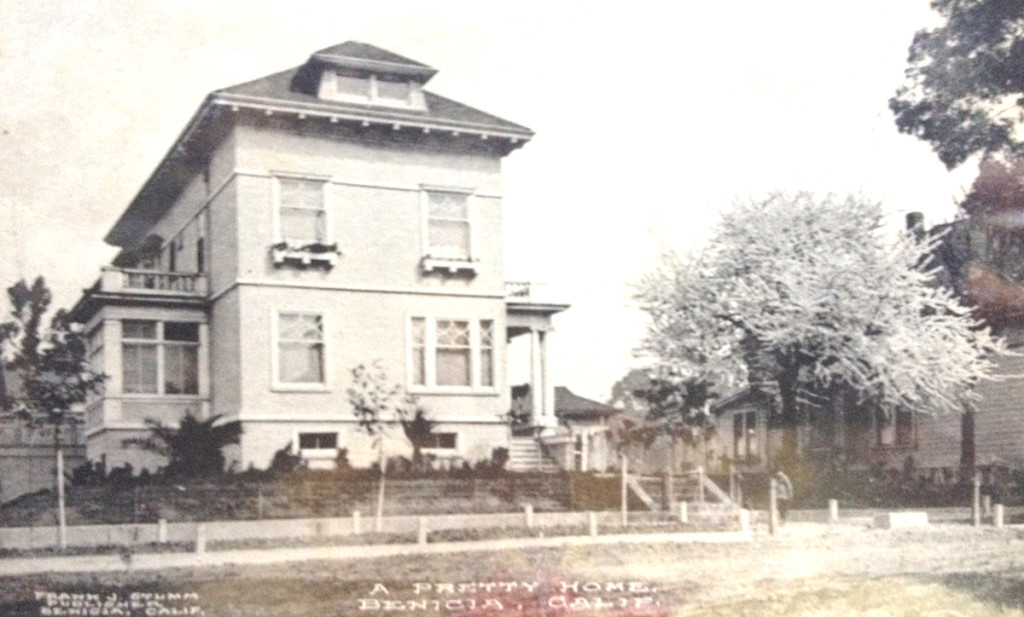 FIRST STREET IN DOWNTOWN BENICIA BOASTS A VARIETY OF BUSINESSES, from kites and computers to music and Mexican food. Would you like a massage or do you need a workout? Want to learn karate or buy a house? Need a loan or the latest bestselling novel?
FIRST STREET IN DOWNTOWN BENICIA BOASTS A VARIETY OF BUSINESSES, from kites and computers to music and Mexican food. Would you like a massage or do you need a workout? Want to learn karate or buy a house? Need a loan or the latest bestselling novel?
How about fashions from Paris, antique furniture, a vintage wedding dress or an original painting or sculpture? Find the perfect bike or skateboard, select a gift “4 every 1” you know. Have picky eaters visiting? Let them try food from Mexico, Italy, Japan, Thailand, India, China, Hawaii, Europe, the Americas or the Victorian era (at the Camellia Tea Room, of course).
Get a haircut or even a shave. Relax in a local pub or sports bar, taste wine, visit the office of a newspaper or magazine. Take a yarn class or paint your own pottery, replace a floor, remodel your kitchen, watch live performers or buy fresh eggs.
And if you add the businesses that once enlivened the city’s main thoroughfare, the array becomes even more varied — from the world’s oldest profession to major shipping and tanning concerns, with grocers, laundries and a lumberyard along the way.
Past and present, all of Benicia’s First Street businesses have shared the street with the Benicia State Capitol building — which is why it makes sense for the Benicia State Parks Association’s Capitol Building Neighbors program to honor First Street businesses in the upcoming exhibit “Making a Living on First Street: F.J. Stumm and Ansley K. Salz.”
The exhibit, opening March 23 at the Capitol, will highlight two historic businesses: Stumm’s business selling jewelry and so much more, including his son Frank’s postcards; and the Kullman-Salz Benicia Tannery.
For almost 50 years, the Stumm and Salz businesses thrived, together, on First Street. Picture this: On upper First Street, catty-corner to the old State Capitol Building, was a shop that, in its day, would have been the equivalent of a cross between Tiffany’s and the Apple Store. Meanwhile, at the end of the street, just one block above the train depot, was a sprawling complex of industrial buildings that looked, as noted by one observer, “almost dystopian.”

AN F.J. STUMM ADVERTISEMENT published in The Benicia Herald on April 28, 1916. Stumm’s ads ran, regularly, in the top left corner of page 3.
Image courtesy Benicia Historical Museum
F.J. Stumm sold jewelry, watches and clocks, but he also sold much more: fine china and sterling silver, crystal, loose diamonds, Victrolas and the records to play on them, umbrellas, ukuleles and “lemonade sets.” Customers came from across California, from the Northwest and the Southwest, even from as far away as east of the Rocky Mountains. Consider, too, watches were the “smart phones” of their day — must-have mechanical devices that kept one up to date, at least as to what time it was. Now couple this with the tens of thousands of postcards Frank Jr. sold in the store. These were pre-email, pre-Internet messages that went all over the world, sharing views and chronicling history.
Down at the Tannery, tanning buildings — some five stories tall — lined both sides of lower First Street and spread east for several blocks. Covered walkways over streets, including First Street, linked many of the buildings. How do we know? From a Frank Stumm postcard.
In the early 20th century, Benicia produced one-third of all the leather made in California. Though the city boasted several tanneries, Kullman-Salz was the largest. In 1903 it employed about 200 men and handled 800 sides of leather per day, from 4,000 to 5,600 per week.
The Stumms, the Kullmans and the Salzs were — for a brief time — residential neighbors as well. Throughout their time in Benicia the Stumm family lived in a richly appointed apartment over their shop. The Kullmans lived across from St. Paul’s Church on East J Street, while Ansley Salz owned an imposing Victorian just off First Street.
Today, Bookshop Benicia occupies the space that once was the Stumm shop. On lower First Street, a plaque is posted about the Kullman-Salz Tannery; shops and condos now occupy the Tannery space.
Businesses, both today and in the past, are more than economic entities. Behind them, fueling them, are the people.
Part of the specialness of shopping, dining or obtaining services on First Street is the opportunity to occasionally encounter the owner — the person whose vision has created the world you experience when you walk in that shop’s door.
Part of the goal of the BSPA’s new exhibit is to reveal aspects of personality and elements of the life experience, of historic business owners F.J. Stumm and Ansley K. Salz. Yes, their businesses were important, but their lives were also formed by other elements — like a revolution in Mexico, a partner’s suicide, a passion for music, a bout of nervous exhaustion.
Making a living on First Street — in the past as well as the present — is a continuing story of people giving Benicia its unique, wonderful spirit. See the exhibit at the State Capitol building — then visit a First Street business and see for yourself.







What is BSPA? When does exhibit start? Thx for article
Hi,
The BSPA is the Benicia State Parks Association.
The exhibit opens–with a special unveiling–at 2:00 p.m. On March 23.
Thanks for asking!
Thank you. Sounds like a great exhibit